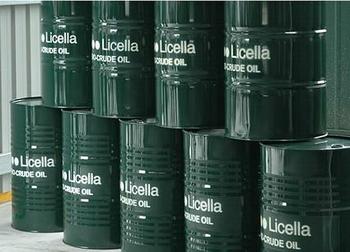澳洲新創公司Licella的科學家開發出新的廢物利用技術,能將造紙產生的生質廢料製成可取代石油的「生質原油」,吸引加拿大紙廠加福(Canfor)的注意。

透過新技術轉製成的生質原油,可直接進入現代石油化學精煉流程,產生再生燃料。圖片來源:Licella。
一般生質燃料能源密度低,不夠穩定,難以應用在運輸上,也難以混用。Licella的生質燃料則克服了這些困難。西班牙ITQ實驗室也證實,Licella的生質原油的確能透過標準精煉設備,製成煤油和柴油。
加福的硫酸鹽製漿法產生的廢木材,透過新技術轉製成的生質原油,可直接進入現代石油化學精煉流程,產生再生燃料。加福計畫投資興建商業規模的生質原油廠,整合緊鄰的紙漿廠,讓資源密集的紙漿產業轉型。
Licella的其中一個共同創辦人是雪梨大學化學教授馬斯邁爾(Thomas Maschmeyer),與雪梨大學合作開發這個獨特技術——催化水熱反應爐(Catalytic Hydrothermal Reactor,Cat-HTR™)。
「每棵樹只有30%的生物質量會變成紙,剩下都是廢料。我們利用這些集中的再生廢料製造生質原油。」馬斯邁爾說。
目前漿紙業的廢料都是燒掉產生低品質的熱能。但現在Cat-HTR技術理論上可以處理任何形式的木質纖維素生物質量,不需要預先將廢料烘乾。
在Licella試驗廠進行一連串成功的初步試驗後,Licella(Licella Fibre Fuels Pty Ltd.)與上市公司加福(Canfor Pulp Products Inc.,CPPI)於5月底成立合資公司(Licella Pulp Joint Venture)。
Cat-HTR™技術整合成功後,Licella Pulp合資公司將開始研究如何提供解決方案給其他紙漿廠。
今年6月稍早,在阿姆斯特丹舉辦的第24屆歐洲生質研討會與展覽提供了獨特的產業綜覽,以及生物質在轉型低碳的過程中扮演的角色。
2015年12月巴黎氣候大會達成協議、4月175國簽署後,國際機關和科學組織皆同意,生物質和生物經濟是幫助全球達成暖化2°C以內的關鍵。
Scientists with the Australian start-up Licella have devised a way to use biomass waste from the papermaking process to make a new petroleum substitute – biocrude oil – that has attracted the interest of Canadian pulp and paper producer CanFor.
The process can convert biomass, including wood residues from Canfor Pulp’s kraft pulping processes, into biocrude oil that is ready to go into existing petrochemical refinery streams to generate renewable fuels.
The ITQ laboratory in Valencia, Spain has demonstrated that it is possible to upgrade Licella’s biocrude to kerosene and diesel utilizing standard refinery infrastructure.
Other biofuels are typically low-energy density, are not stable, and are difficult to transport and blend. Licella’s biofuel has proven to be stable, transportable and blendable.
CanFor plans to invest funds sufficient to build commercial-scale biocrude plants that are integrated with adjoining pulp and paper plants to transform the resource-intensive pulp and paper industry.
Co-founded by University of Sydney chemistry professor Dr. Thomas Maschmeyer, Licella developed the unique process in partnership with the University of Sydney. Their Catalytic Hydrothermal Reactor (Cat-HTR™) technology converts low-cost, non-edible, waste biomass into biocrude oil.
“Only 30 percent or so of a tree becomes paper, the rest is waste. We use this waste to make a new product – biocrude oil from renewable, already aggregated waste,” Maschmeyer explained.
Currently, pulp and paper waste is burned for low-quality process heat. But now Licella’s Cat-HTR technology can theoretically process any form of ligno-cellulosic biomass, without the need to dry the feedstock before processing.
In late May, Licella Fibre Fuels Pty Ltd. and the publicly-traded Canfor Pulp Products Inc. (CPPI) signed an agreement to form a joint venture under the name Licella Pulp Joint Venture.
The agreement follows a successful program of preliminary trials conducted on feedstock from Canfor Pulp’s Prince George, British Columbia pulp mill at Licella’s pilot plants located at Somersby, an hour north of Sydney in New South Wales, Australia.
Upon successful integration of the Cat-HTR™ technology, the Licella Pulp joint venture will investigate offering this solution to other third party pulp mills.
Earlier this month, the 24th European Biomass Conference and Exhibition in Amsterdam provided a unique overview of the state of play of the sector and a much clearer view of the role biomass can play in achieving the transition to a low carbon economy.
After the landmark Paris Climate Agreement reached in December 2105, and signed by 175 nations in April, international institutions and scientific organizations agree that biomass and the bio-based economy are crucial to help the world meet the climate change target of less than 2 degrees Celsius temperature rise over pre-industrial levels.
※ 全文及圖片詳見:ENS







